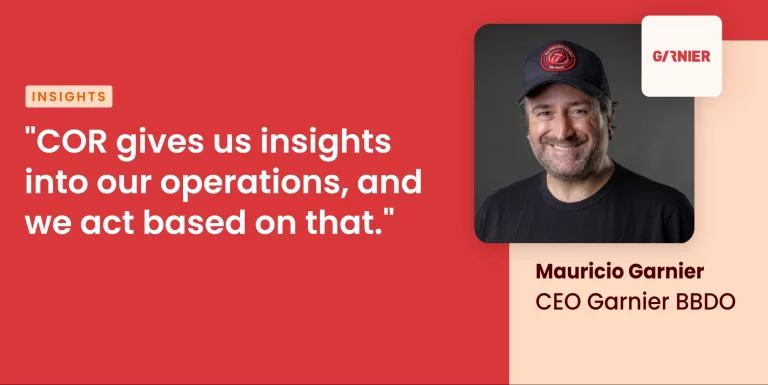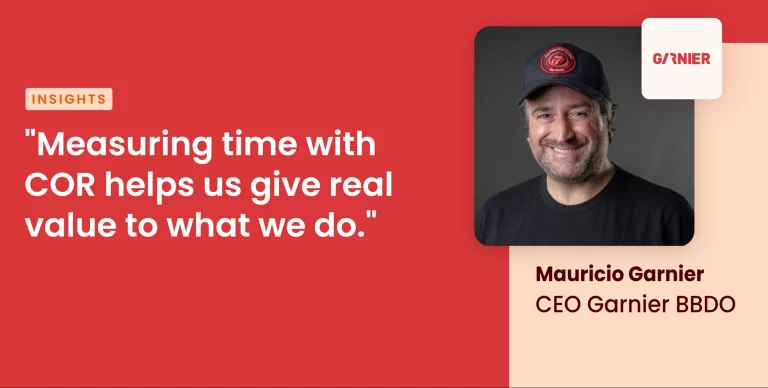Even the best of plans, the most detailed and thought-out idea, and schedule are permeable to changes along the way. Thinking that everything will go according to plan is optimistic to a fault, people in the team can have unexpected issues, providers could miss their deadlines, the client could request a rework or change its mind after deliverables are seen. So, is planning and setting a roadway useless? Not at all.
It is vital for a functioning business, but it is still smart to understand how to face changes and deviations from the first plan. What an intelligent business can do is analyze and visualize how deviations work, why they happen, and how they affect the bottom line. Project managers and executives can use this data in order to compare planned performance with the actual outcome and requirements of delivered projects. Team members, as well as PMs, can also benefit from this knowledge, it can help identify underlying procedures that are not streamlined as well as other issues that require a change in methodology or approach.
What is Project Deviation?
Project Deviation is any deviation from the original project proposal, the service request proposed to the business by the client, and the initial project plan, the blueprint that denotes the way in which the project has been outlined in order to reach its completion. In other words, this can also be thought of as the distance between the final results of the project, as they were initially stipulated by the client and the professional service providers, and the actual work done towards its execution. It can be caused by non-conformity between the plan and the result.
Project deviation can even be a formal cause for contract termination if the executioner violates any of the terms agreed upon by both parties. This may seem like a grotesque consequence, but it can happen. Even if the possible outcome of any misalignment of the contractual obligations is not a contract termination, it can still be a very harmful hit for a business’s reputation and entail great actual costs and missed opportunities.
That being said, project deviation can be a pretty common issue, and this can be an even more frequent issue in large projects, especially when dealing with innovative elements, or breaking ground in any field or industry. But the fact that it can be common doe not mean it should be simply accepted as is. Any discrepancies with the plan or any sudden changes should be documented, analyzed, and incorporated into the management evaluation and governing bodies. To assure that the losses or serious setbacks are minimized project deviations must be identified as early as humanly possible, in order to take corrective action.
How do you evaluate the progress of a project?
The steps towards analyzing the project progress are not necessarily hard to follow but it does require an amazing capacity and disciplined methodology for data recollection and its posterior interpretation.
The first order of business is the responsibility of the project manager, they need to identify the shift from the original plan, that is to say: the deviation of the real performance. Then they will need to determine the causes or factors that allowed this to happen, and assess the gravity of the situation.
After this is done, the PM will need to start corrective actions to take the project back to its designated performance. And the final step, the home stretch, is to evaluate how to avoid similar issues, and take proactive and preventive measures to ensure it does not happen again in the future. Easier said than done, right?
It can be tricky to spot problems before they appear, but there are certain aspects of deviation analysis that can help:
- Understand the KPI and relevant metrics in the case
- Evaluate and document the full spectrum of the deviation
- Take note of the extent and degree of the impact on the project performance
- Pinpoint the causes of the deviation.
- Initiate corrective action
- Determine the scope of work and resources necessary to implement corrections
- Estimate a time period for getting the project under control.
- Propose preventive actions.
What are the factors affecting project deviation?
Most projects offer a unique service or product, and during production or creation of deliverables what was once a straightforward affair can suffer uncharted changes along its lifecycle. In this case, the desired project performance can be hard to read while trying to maintain the original KPIs.
Efficient project management requires the real-time management of these deviations and variances. The feasibility of the project lies in having the capability of rolling with the punches, accepting change, and understanding that flexibility or rigidity is not a solution. Sometimes change can be a positive influence for the team by the end of the project.
The key to successful project management lies in managing these changes and variances. changes are going to happen, and they can even be nourishing for the overall project and its goals. The reasons for changes may vary depending on each team project, or every new iteration of a commonly provided service or product.
Sometimes the changes that occur within the project are activated by the client or project team in order to meet previously agreed-upon contractual obligations. Other times it can be triggered by a lack of resources, like the need for specialized skilled labor, and the allocation of these tasks to freelancers or specialists may increase the project cost. Maybe the availability and cost estimation of equipment and material has been modified by shifts in the market. The same rings true when thinking about changes in regulatory law or regulations that affect the actual progress of the scope of work. A change in regulations can mean an exponential escalation of the scope of work in revisions in, for example, construction projects.
All of these will have a substantial impact on the project’s final cost. This will be a deviation from the initial estimate cost, if the business has to maintain the contractual fee, then it may lose profit.
Another area of possible deviations can be an incorrect assessment of the amount of time each task will take, or outdated time estimation methods. The allocation of useless tasks can also make a dent in the project schedule, this can also happen when there’s an incorrect identification of activities in the critical path. These can happen when using an improper time control system, risk assessment or management system, as well as maladaptive change control procedures.
These factors need to be analyzed and undergo integration into an interactive decision-making mindset. It is fundamental to understand these deviations and translate them into data subsets to help identify problems before there’s nothing else to do about them.
The use of a project management tool that can aid in data gathering and reporting can greatly reduce the chances of a project getting off rails. Especially when they involve multiple stakeholders and a complex framework of dependencies.
What can you do about it?
Control the scope of work
A lot of projects undergo persistent changes to their overall goal. And these changes can be hard to manage for the project team, especially if it’s their first time doing a new type of work. They may be unable to control the changes and therefore unable to take note of the impact it will have on the project as a whole. This is what we call scope creep, an uncontrolled increase in the amount of work needed in order to make a timely delivery while maintaining quality control. And all of this without changing the original plan, budget baseline, risk analysis, and resources. When facing a challenge in these areas you could take control by:
- Implementing a deviation control process.
- Regular review of the estimation of this specific project.
- Transparent visualization of the project’s goals, milestones, and purpose.
Project control
A great way of analyzing deviations is using a traditional project management method: Earned Value Management (EVM). It is a well-known technique that allows its user to measure performance and progress, it merges data from the project management trifecta: scope, time, and cost.
It uses measures like the Schedule Variance, the Schedule Performance Index, to evaluate deviations and performance. Even if it is a known and traditional tool, many businesses do not use it, but rather implement similar techniques to analyze, measure, and control deviations. Most of these use and read measurement changes from the planned path at the start of a new project and its final data points.
A great way of taking the bull by its horns regarding deviations is to implement a comparison of the estimated vs. actual logged hours that were required to reach the end of the project. This is vital for professional service businesses since their cost overruns are usually caused by deviation in their main cost and invoicing unit: time. And it is even more important when dealing with clients that are constantly requesting reworks.
Cost control
There’s no doubt: project cost control is a basic need for any business that wishes to remain profitable. It is a vital metric to monitor and evaluate. Cost variance cost performance index, and completion variance is necessary metrics to keep an eye on when thinking about and trying to maintain a grip on cost deviations.
Some enterprises use EVM methods for these issues, but for professional service providers, it’s better to use procedures that track the overall total costs, billable hours, time, and profitability estimates. These analyses are the best option for businesses that are constantly carrying out multiple entire projects at once, and that offer several types of product lines and services.
Gathering data about estimated and logged hours allows executives and project managers to understand how the real and estimated costs affect the cash flow of the business. As well as letting them have constant reporting abilities depending on the project team, client, type of service or other cross-referencing project data subsets that can be of interest when planning the future of the company. This will allow them to take action about their business profitability and bottom line, paving the way for necessary changes that will increase revenue.
With more available money, a business can invest in itself and its talent, via training programs and seminars, as well as improving its research and development capabilities. Therefore allowing it to offer better career and investment opportunities.
Risk control
An adequate project management tool has the ability to save and store historical data. The information that can be gained from time tracking, scope, costs input, client data, profitability deviations, as well as internal procedures is vital for performing real-time risk management at a project level.
Why is knowledge a key ingredient of risk analysis? “Data is the oil” has become a popular phrase, setting aside flashy wordplay, this trend of thought has a lot of merits. When you use every single data point available your business can gain a great competitive advantage. Having the possibility of regularly accessing your data bank will allow your business to access a new level of business intelligence and informed decision-making.
It will not only aid PMs and teams of collaborators to establish risk levels and limits, but it will also let them evaluate the already existing dangers at the start of every new project.
Time management and its importance
When managing a business, having a crystal clear picture is key. Imagine being able to understand at a simple glance when a project is going off the rails, having the possibility of grasping the essence of project standard deviation through visual representations, like real-time Gantt charts and bar charts?
With COR this has become a reality. With our AI-powered all-in-one project management solution, you can keep a registry of every step of a project, from task allocation to cost deviations. Our tool allows for better internal processes, increased transparency and accountability for task dependencies, and a time tracking feature that will help reduce oversaturation and burnout in your employees.
With our reporting capabilities you can understand why things are not going according to plan, and how to improve the situation. Our AI and machine learning algorithms can let you know if a project is going to be a profitable one before you break ground. How? It calculates the necessary hours for each task, based on previous real information, so estimates are based on the previous project and task iterations. Take a step in the business intelligent way and request a demo today!















